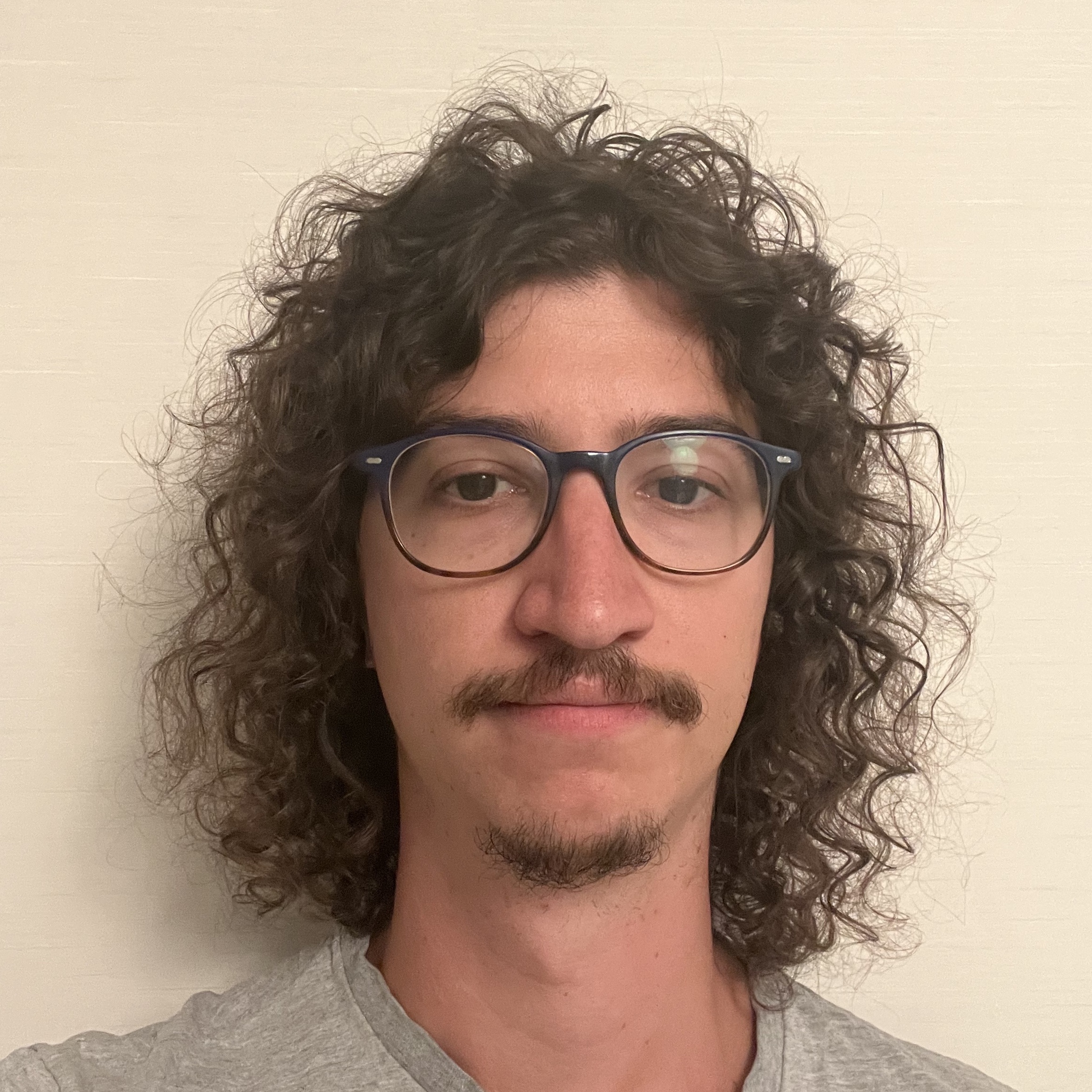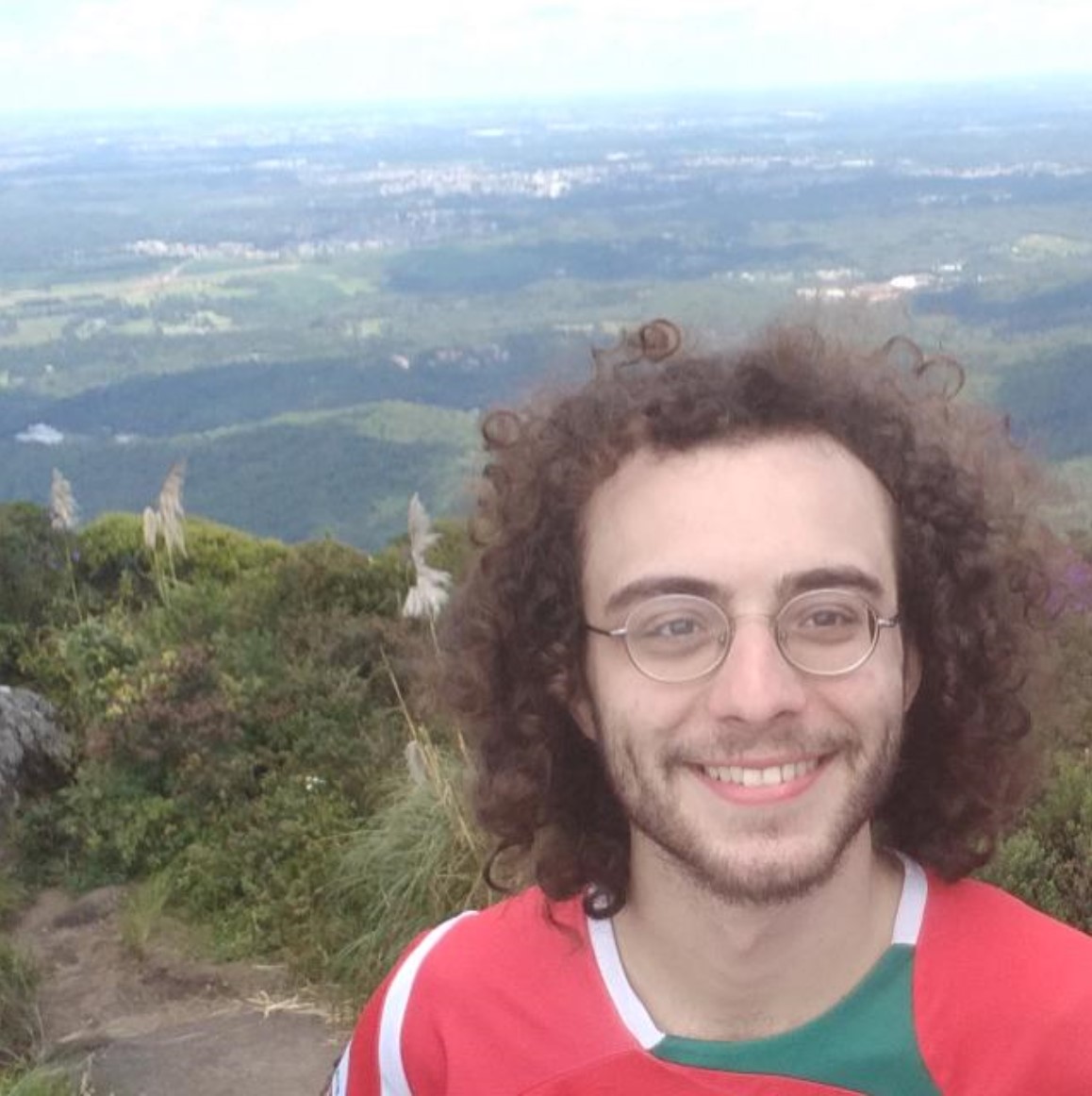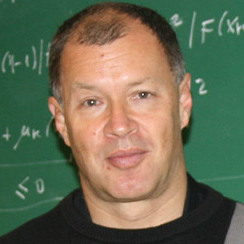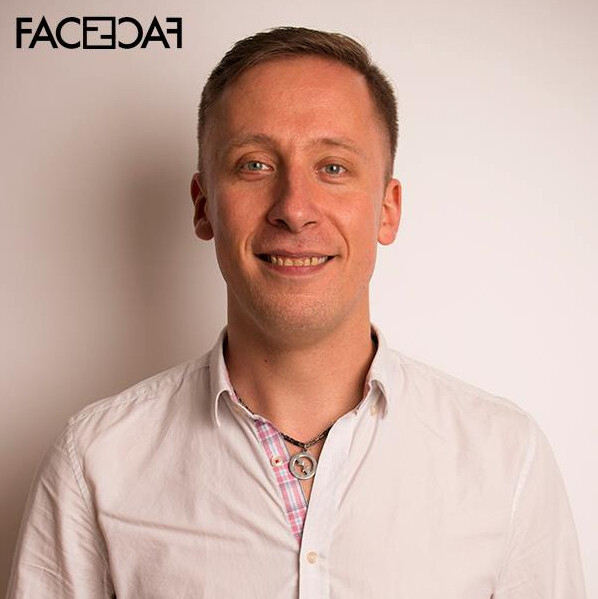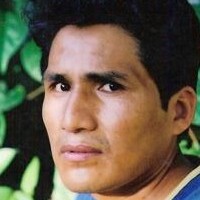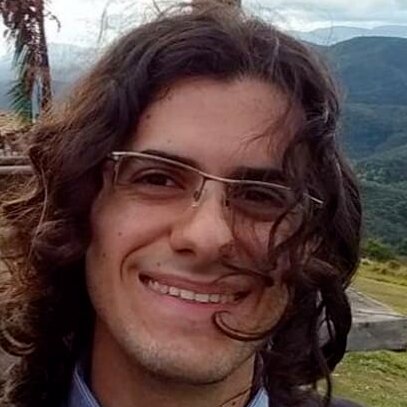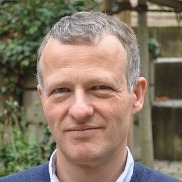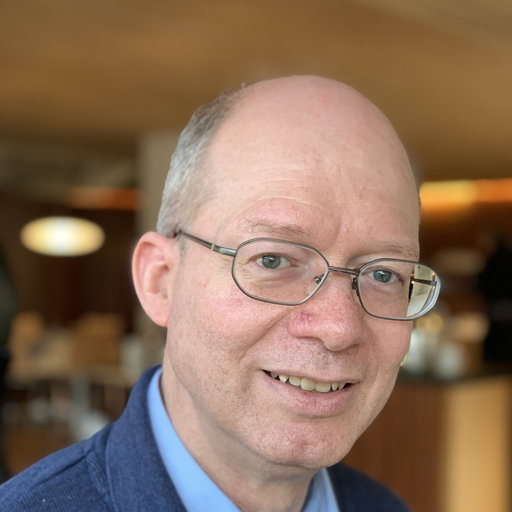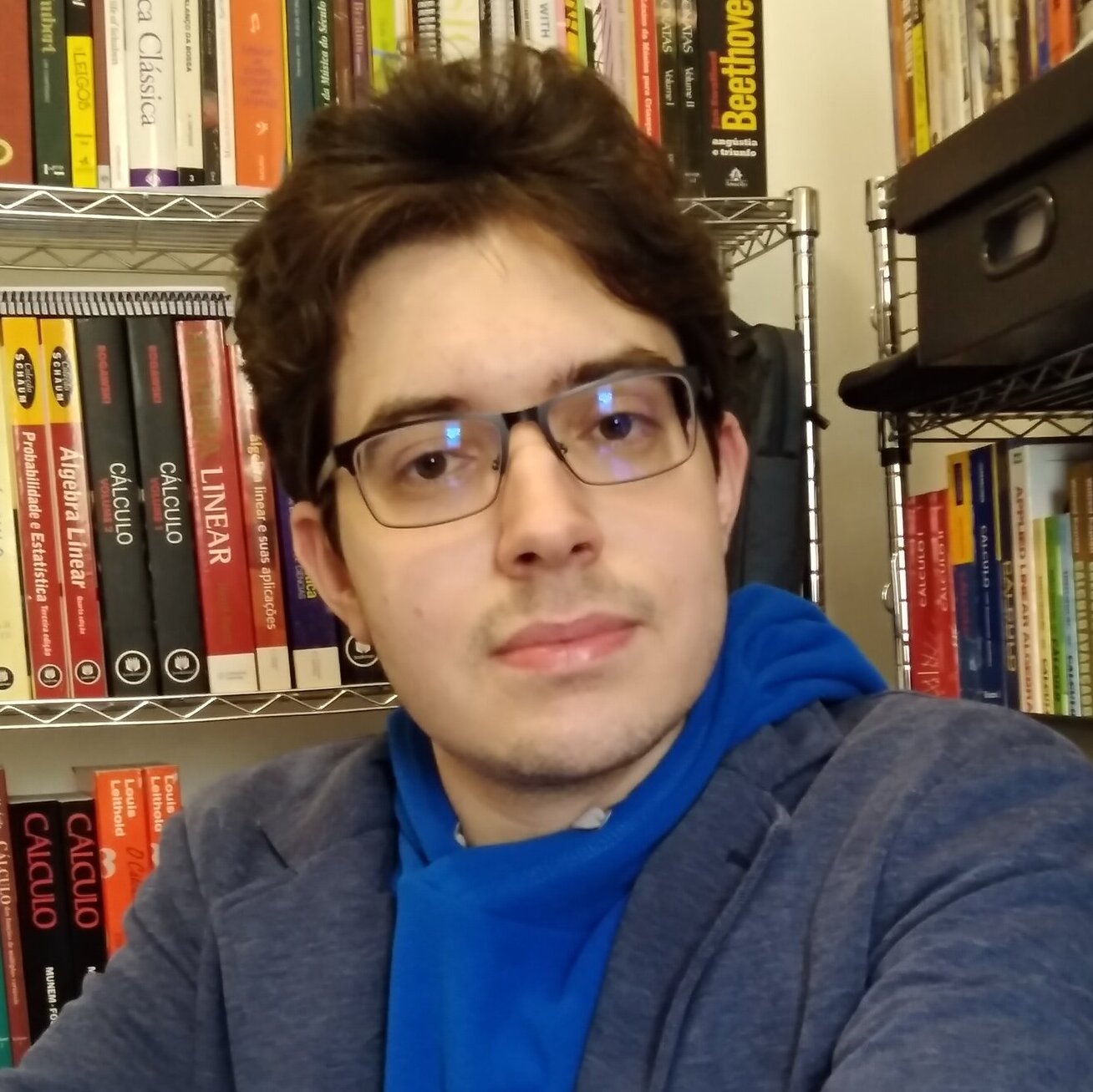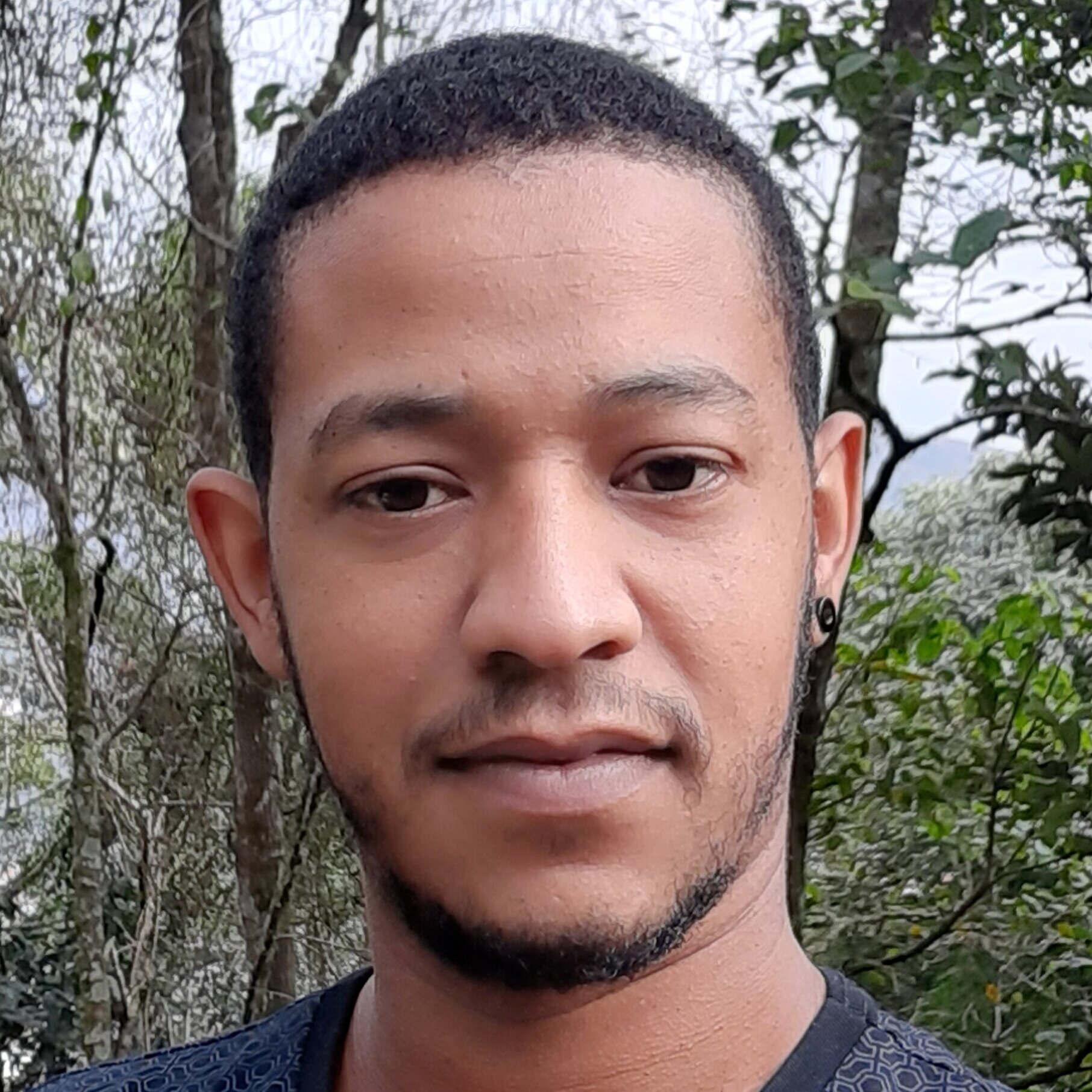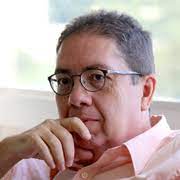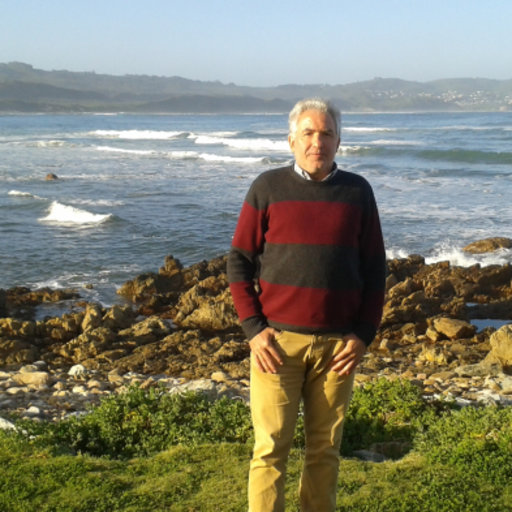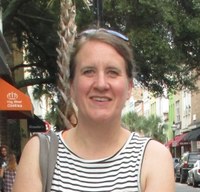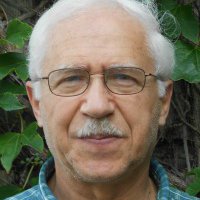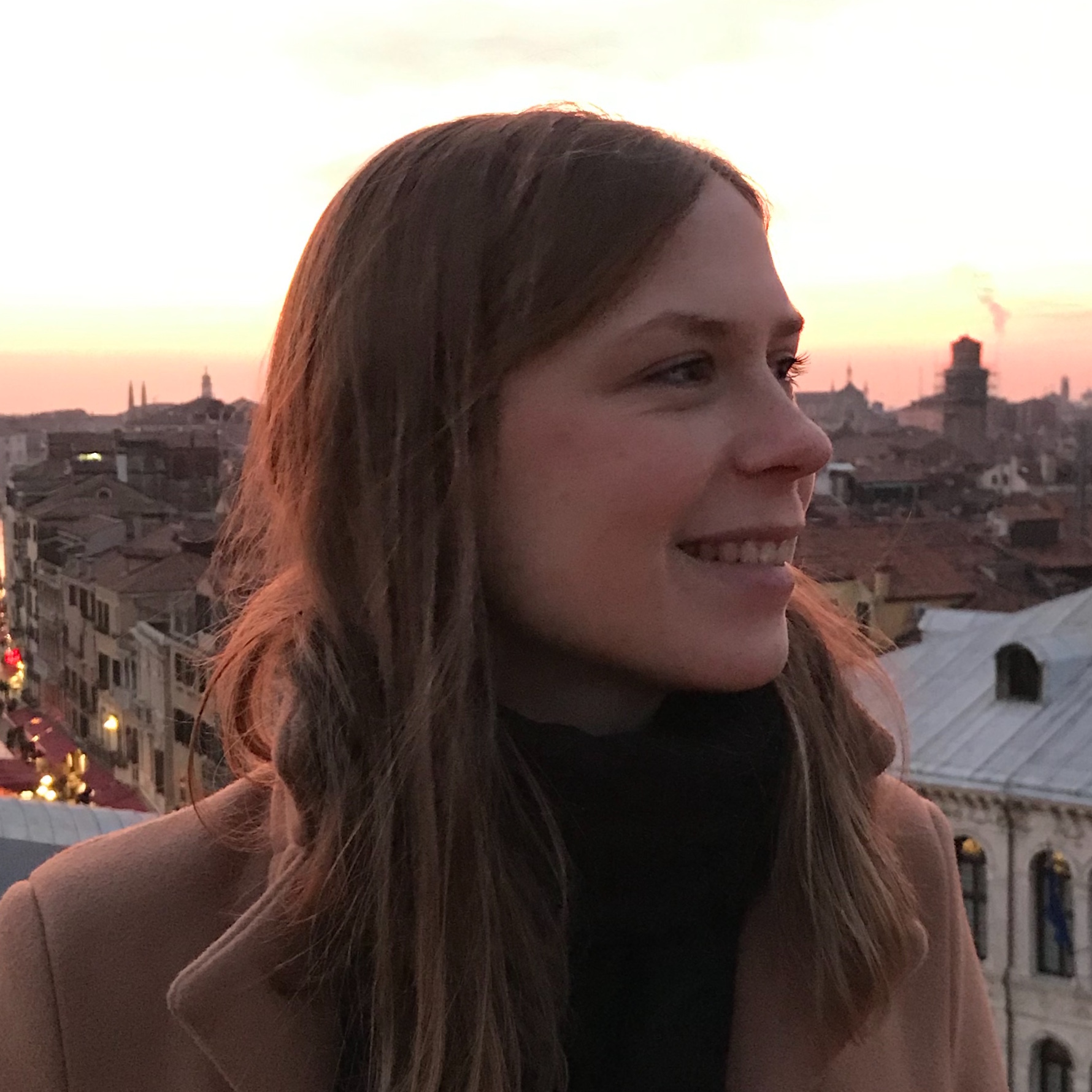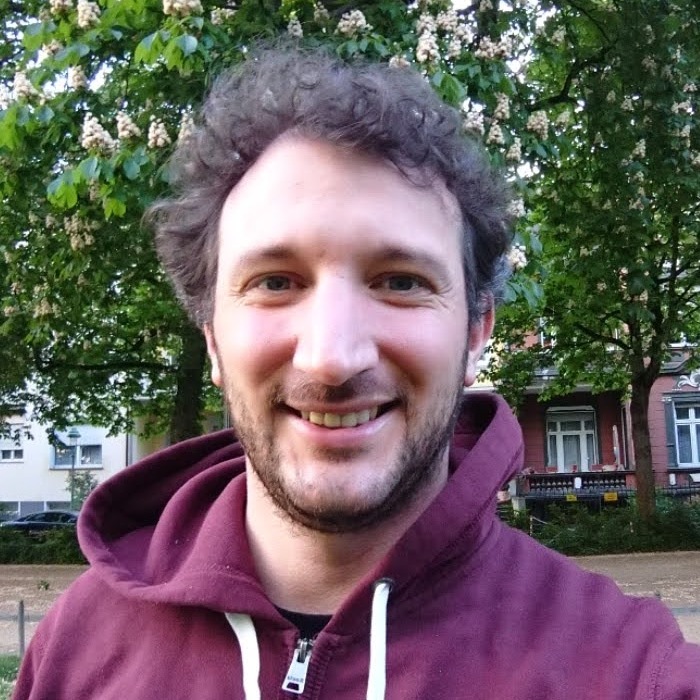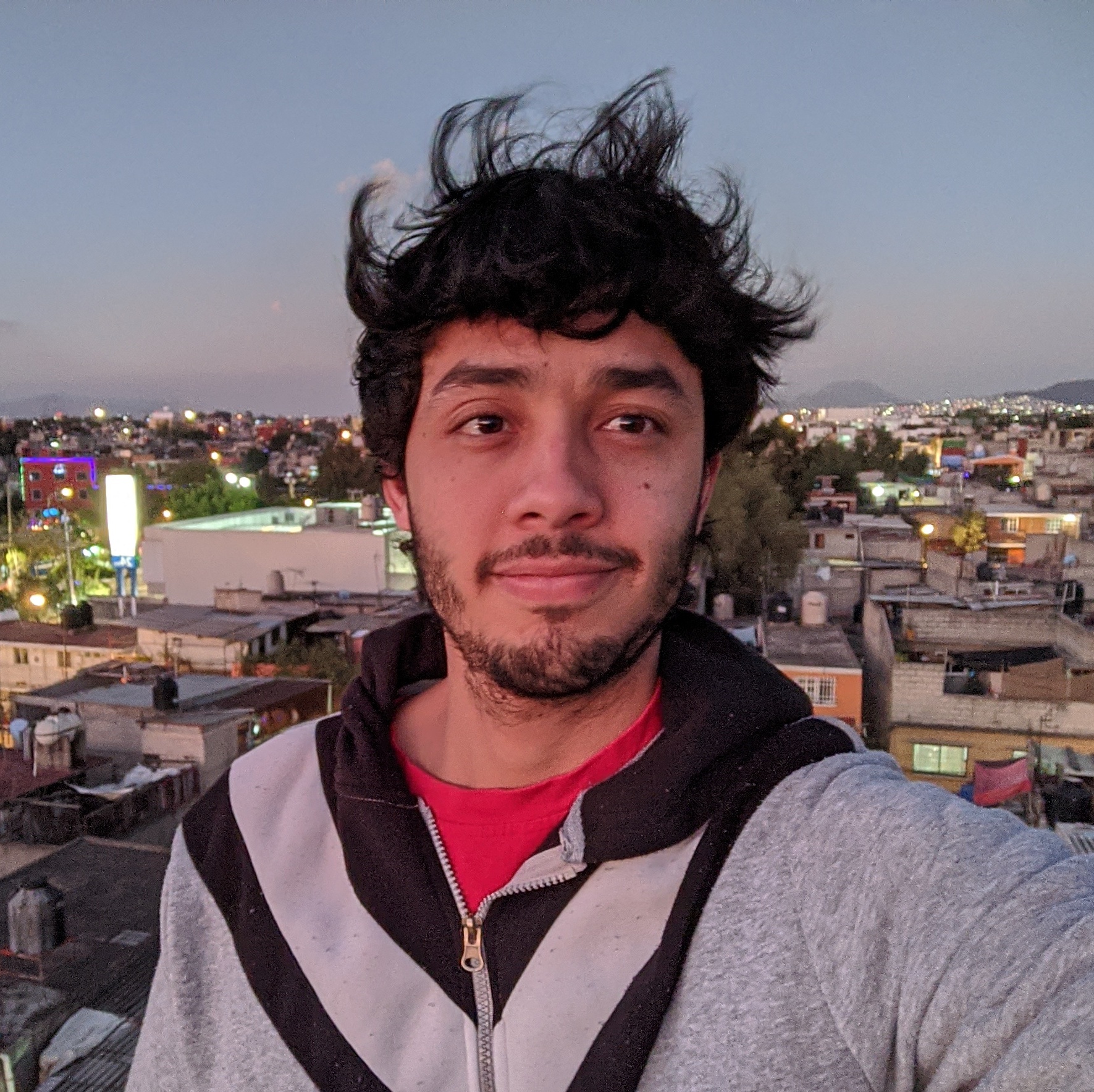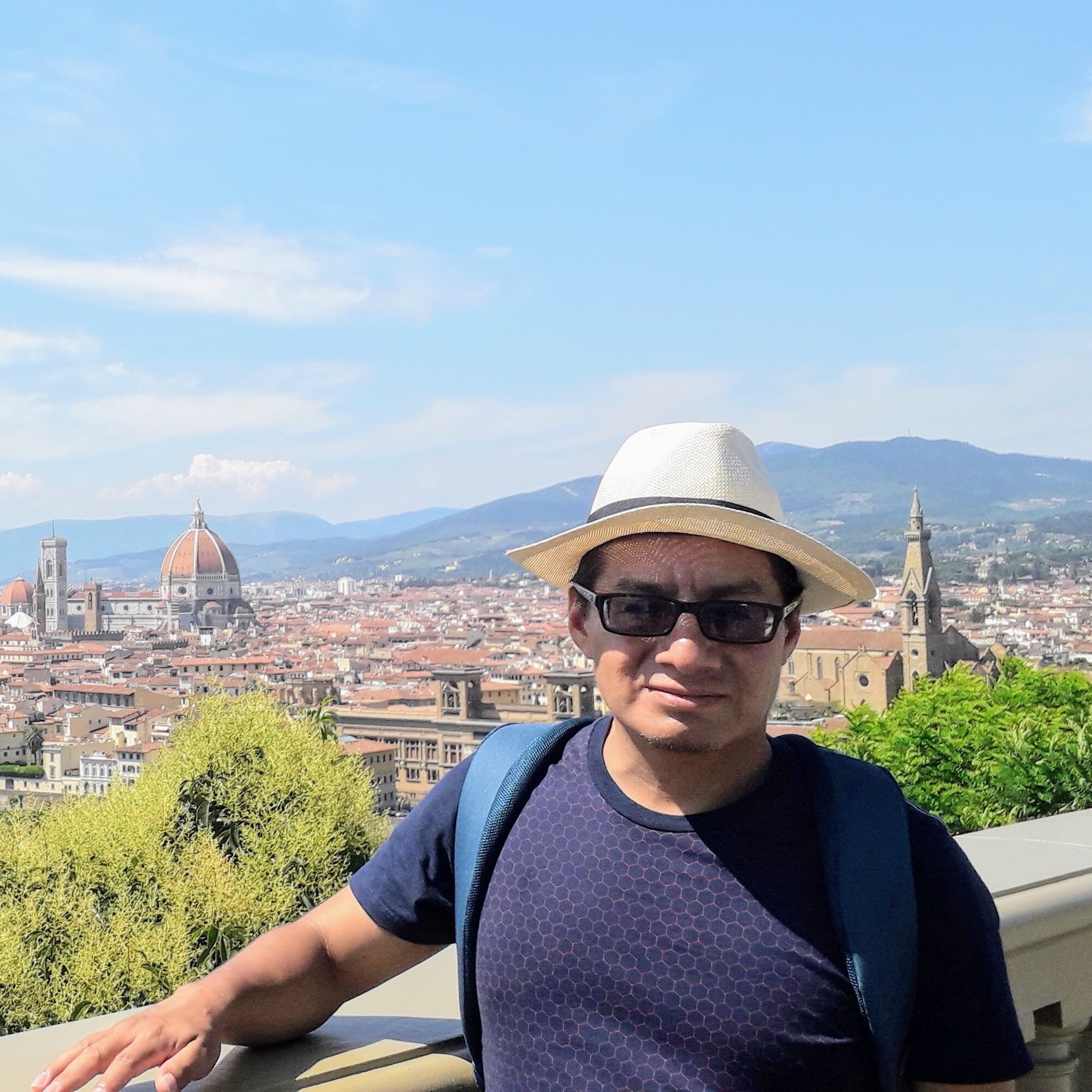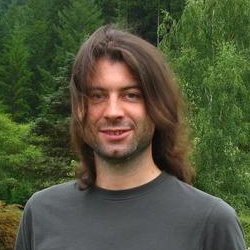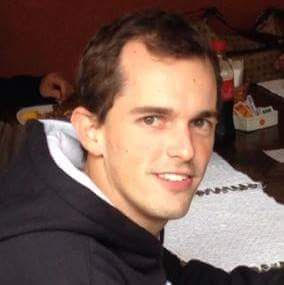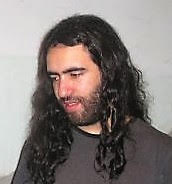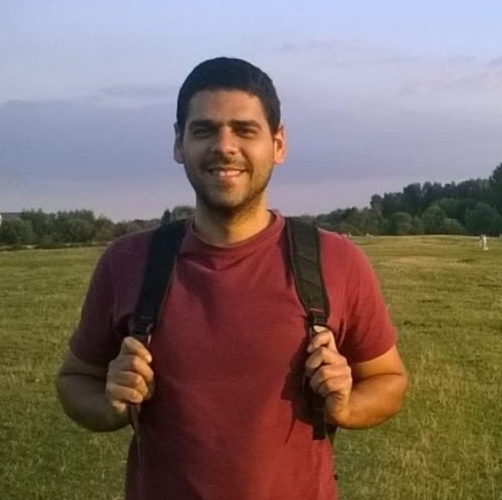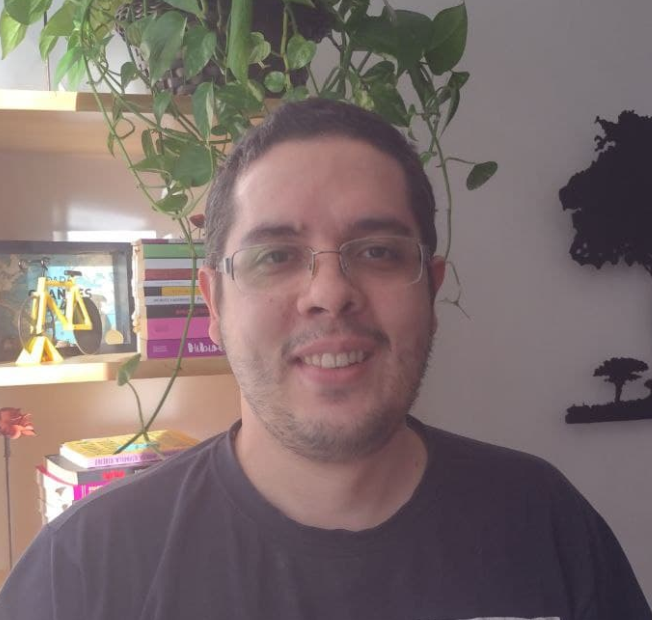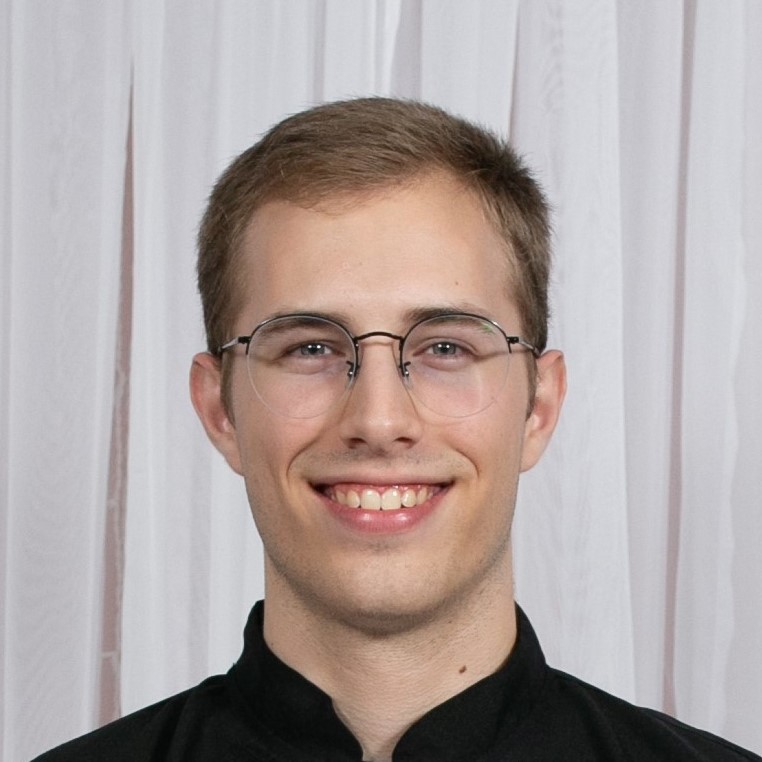RTAA
Representation Theory of Algebras and Applications
Fridays at 16:00 (Sala A132, IME-USP)
Organizer: Kostiantyn Iusenko.
Seminar Mailing List: RTAA — Representações das Álgebras e Aplicações
FORTHCOMING WEBINARS
PAST WEBINARS
27 June, 2025 |
Victor do Valle PrettiIME-USPSuavidade: uma perspectiva algébricaComeçando pela noção clássica de suavidade, abordada em cursos de cálculo e geometria diferencial, veremos como é natural estudar as suas propriedades algébricas através das derivações. Na álgebra comutativa, esta noção pode ser caracterizada pela sua homologia. Neste seminário, definiremos um novo conceito de suavidade que visa preservar algumas das principais características da suavidade para o contexto não-comutativo, com foco nas suas propriedades homológicas. Show abstract |
13 June, 2025 |
Sabrina Ivanil PereiraIME-USPO anel de cohomología de Hochschild para álgebras monomiaisNeste seminário, pretendo mostrar uma ferramenta para o cálculo dos grupos de cohomologia de Hochschild para álgebras monomiais de dimensão finita, que são quocientes da álgebra de caminho kQ/I em que I é um ideal bilateral gerado por monômios. |
30 May, 2025 |
Guilherme da Costa CruzIME-USPContraexemplos em torno das dimensões globais IIHoje, é um fato conhecido que as diferenças entre as dimensões globais à esquerda, à direita e fraca de um anel podem ser tão grandes quanto se queira. Neste seminário, buscarei apresentar cronologicamente a evolução dos contraexemplos, construídos essencialmente ao longo da década de 1960, que permitiram que chegássemos a tal conclusão. Em especial, gostaria de enfatizar algumas das contribuições de Barbara Osofsky ao redor deste tema. Show abstract |
23 May, 2025 |
Guilherme da Costa CruzIME-USPContraexemplos em torno das dimensões globaisHoje, é um fato conhecido que as diferenças entre as dimensões globais à esquerda, à direita e fraca de um anel podem ser tão grandes quanto se queira. Neste seminário, buscarei apresentar cronologicamente a evolução dos contraexemplos, construídos essencialmente ao longo da década de 1960, que permitiram que chegássemos a tal conclusão. Em especial, gostaria de enfatizar algumas das contribuições de Barbara Osofsky ao redor deste tema. Show abstract |
09 May, 2025 |
Edson Ribeiro AlvaresUFPRHereditary Representation AlgebrasThe goal of this talk is to present the progress made in the research on the class of algebras $A$ such that $gl.dim(\mathrm{End} A \oplus DA) = 3$. |
25 April, 2025 |
Viktor ChustIME-USPThe problem of composites of irreducible morphismsThe composite of $n$ irreducible morphisms between indecomposable modules always belongs to the $n$-th power of the radical of the module category. However, if $n>1$, there are many examples of non-zero composites belonging to the $n+1$-th power or even higher powers of the radical. Determining when this happens is a general problem, and has been studied in several articles. Recently, C. Chaio, P. Le Meur and S. Trepode showed that Riedtmann's well-behaved functors can be used as a tool for studying this problem. In this talk we will show some of the background on this topic and also how we used Riedtmann functors to obtain new results. This work is part of my PhD thesis under supervision by Flávio U. Coelho and is supported by FAPESP, grant 2020/13925-6. Show abstract |
04 April, 2025 |
Eduardo MarcosIME-USP$\tau$-Hochschild (co)-homology, a $\tau$ pergunta de Happel, e a $\tau$ conjectura de HanA idéia central é seguir as noções modernas que usam a fórmula de Auslander para substituir os grupos $\operatorname{Ext}(M, N)$ por $\operatorname{DHom}(\tau N, M)$ e usamos as fórmulas usuais de Hochschild (co)-Homology usando os transladados de Auslander-Reiten superiores. |
28 March, 2025 |
Ruy Exel FilhoUFSCRepresentações de álgebras associadas a grupóides amplosUm grupóide topológico é dito amplo se sua topologia admite uma base de abertos compactos, restritos aos quais as funções range e source são homeomorfismos. Dado um tal grupóide \( G \) e um corpo \( K \), Steinberg introduziu uma \( K \)-álgebra associativa \( A_K(G) \), estabelecendo um paralelo algébrico com a construção das \( C^* \)-álgebras de grupóides introduzidas por Renault em sua tese de 1980. Entre as álgebras de Steinberg, encontram-se várias classes amplamente estudadas, como as álgebras de grupos, as álgebras parciais de grupos, as álgebras de semigrupos inversos (universais ou tight), as álgebras de caminhos de Leavitt e muitos produtos cruzados parciais, além de outras estruturas algébricas relevantes. |
25 October, 2024 |
Amanda de Melo SouzaIME-USPRecobrimento de Galois de Categorias e Módulos GraduadosInvestigamos a relação entre recobrimentos de Galois e módulos graduados em $k$-categorias. Partindo de álgebras do tipo $kQ/I$, associadas a aljavas com relações, estudamos como a teoria de recobrimentos de aljavas pode ser utilizada para entender as graduações de álgebras e suas categorias de módulos. Com base no trabalho de E. Green, estabelecemos uma equivalência de categorias entre a categoria de módulos $A$-graduados e a categoria de representações de aljavas com relações. Show abstract |
16 August, 2024 |
Emmanuel Jerez UsugaIME-USPA homologia parcial de grupoAções parciais de grupos são uma generalização das ações de grupos e aparecem naturalmente quando focamos nossa atenção no comportamento local de uma simetria. Se temos uma ação de um grupo $G$ em um espaço $X$, ao focarmos na estrutura de simetria de um subespaço $Y$ de $X$, geralmente, não obtemos uma ação de grupo; em vez disso, obtemos o que chamamos de uma ação parcial de grupo de $G$ em $Y$. Junto ao conceito de ação parcial de grupo, temos o conceito de representações parciais de um grupo $G$. A categoria das representações parciais é isomorfa à categoria dos $K_{par}G$-módulos, onde $K_{par}G$ é uma certa álgebra universal que governa as representações parciais de $G$. |
28 June, 2024 |
Daniel Negreiros LoboIME-USPRecobrimento de categorias localmente finitas com aplicações às álgebras monomiaisA teoria de recobrimento de k-categorias foi introduzida e desenvolvida por Christine Riedtmann, Klaus Bongartz e Peter Gabriel. Posteriormente, Gabriel explorou as aplicações voltadas principalmente às álgebras de tipo de representação finita. Nesta palestra, irei desenvolver a teoria focada no caso de uma categoria localmente finita. Demonstrarei como este contexto é útil para motivar e trabalhar com duas classes de módulos indecomponíveis. Show abstract |
28 June, 2024 |
Eduardo MarcosIME-USPTau-cohomologia de Hochschild e a Tau pergunta de Happel.Esta palestra é baseada no trabalho em andamento de C. Cibils, M. Lanzilotta e A. Solotar, nós definimos a Tau-cohomologia de Hochschild de uma álgebra A e nos perguntamos o não anulamento da mesma em graus altos é equivalente a dizer que $A$ tem dimensão global infinita. Show abstract |
17 May, 2024 |
Felipe VolochCanterbury UniversityEquações diofantinas aleátoriasAs equações diofantinas são equações polinomiais em varias variáveis e coeficientes inteiros onde as soluções são buscadas entre valores inteiros ou racionais. É notoriamente difícil decidir se tais equações têm soluções. Nesta palestra discutiremos uma antiga conjectura de B. Poonen e do palestrante sobre o que acontece com uma tal equação aleatória e o progresso recente feito na direção desta conjectura. Show abstract |
10 May, 2024 |
Valdir Júnior José Pereira JúniorIME-USPIntrodução às formas automórficas em grupos adélicos IIINas décadas de 60 e 70 do século XX, a teoria de formas modulares foi amplamente generalizada no contexto do Programa de Langlands. O objetivo deste sequência das palestras será introduzir a linguagem de adeles e ideles de um corpo de números algébricos ou corpo de funções em uma variável sobre um corpo finito, fornecer algumas aplicações, definir as formas automórficas em grupos adélicos e compará-las com formas modulares. Por último iremos falar da teoria de Grafos de Operadores de Hecke que é utilizada no cálculo de formas automórficas sobre um corpo de funções sobre um corpo finito. Show abstract |
03 May, 2024 |
Valdir Júnior José Pereira JúniorIME-USPIntrodução às formas automórficas em grupos adélicos IINas décadas de 60 e 70 do século XX, a teoria de formas modulares foi amplamente generalizada no contexto do Programa de Langlands. O objetivo deste sequência das palestras será introduzir a linguagem de adeles e ideles de um corpo de números algébricos ou corpo de funções em uma variável sobre um corpo finito, fornecer algumas aplicações, definir as formas automórficas em grupos adélicos e compará-las com formas modulares. Por último iremos falar da teoria de Grafos de Operadores de Hecke que é utilizada no cálculo de formas automórficas sobre um corpo de funções sobre um corpo finito. Show abstract |
26 April, 2024 |
Valdir Júnior José Pereira JúniorIME-USPIntrodução às formas automórficas em grupos adélicosNas décadas de 60 e 70 do século XX, a teoria de formas modulares foi amplamente generalizada no contexto do Programa de Langlands. O objetivo deste sequência das palestras será introduzir a linguagem de adeles e ideles de um corpo de números algébricos ou corpo de funções em uma variável sobre um corpo finito, fornecer algumas aplicações, definir as formas automórficas em grupos adélicos e compará-las com formas modulares. Por último iremos falar da teoria de Grafos de Operadores de Hecke que é utilizada no cálculo de formas automórficas sobre um corpo de funções sobre um corpo finito. Show abstract |
22 March, 2024 |
Victor do Valle PrettiIME-USPÁlgebras Suaves e Homologia Relativa IIÉ sabido que a suavidade de um morfismo é uma das principais noções de regularidade na matemática, seja na geometria, na análise e também na álgebra. Nesta palestra, abordaremos as noções básicas da homologia relativa e explicaremos como caracterizar morfismos suaves através da dimensão global relativa (recebendo um certo análogo do Teorema de Auslander-Buchsbaum-Serre). |
15 March, 2024 |
Victor do Valle PrettiIME-USPÁlgebras Suaves e Homologia RelativaÉ sabido que a suavidade de um morfismo é uma das principais noções de regularidade na matemática; seja na geometria, na analise e também na álgebra. Neste seminário definiremos esta noção para álgebras sobre um anel comutativo, apresentando diversos exemplos geométricos, e como caracteriza-la no contexto da álgebra homológica(clássica e também relativa). Além disso, veremos como a conjectura de Han pode ser relacionada a esta caracterização. |
08 March, 2024 |
José Luis Vilca RodríguezIME-USPO problema da globalização de ações parciais de grupos em álgebras não associativasDe modo geral, uma ação de grupo parcial em uma álgebra é uma coleção de automorfismos parciais (bijeções entre ideais) que são compatíveis com a operação de grupo. O objetivo deste seminário é estudar em que condições uma ação parcial de um grupo numa álgebra não associativa pode ser estendida a uma ação global (usual) de um grupo, ou seja, uma ação por automorfismo. Este problema é conhecido como problema da globalização, e a ação global é chamada de globalização. |
17 November, 2023 |
Mattheus PereiraUnBAcessibilidade para grupos pro-$p$Suponhamos que um grupo pro-$p$ (limite projetivo de $p$-grupos finitos) $G$ se decomponha como um produto pro-$p$ livre $G = G_1 \mathbin{\coprod} G_2$. Por outro lado, $G_2$ se decompoe como $G_2 = G_3 \mathbin{\coprod} G_4$ de forma que $G = G_1 \mathbin{\coprod} (G_3 \mathbin{\coprod} G_4)$. O grupo $G$ pode ser decomposto infinitamente como uma sequencia de produtos pro-$p$ livres ou esse processo se interrompe em algum momento? Se essa decomposição ́e finita, dizemos que $G$ ́e um grupo pro-$p$ acessível. A acessibilidade para grupos pro-$p$ foi introduzida por Gareth Wilkes em 2018. Essa palestra tratará dos avanços nessa área de pesquisa nos seus 5 anos de existência. Show abstract |
20 October, 2023 |
Diego Salazar GutierrezIMPAModular invariance of characters of Virasoro modulesIn this talk, we introduce $Q$-graded Lie algebras $(\mathfrak{g}, \mathfrak{h})$, which resemble the usual construction of the root system of a semisimple finite dimensional Lie algebra $\mathfrak{g}$ from a Cartan subalgebra $\mathfrak{h}$. The Virasoro Lie algebra and affine Lie algebras are among the most prominent examples of $Q$-graded Lie algebras. Next, we classify the simple objects in the category $\mathcal O^i$, which is a generalization of the more common BGG category $\mathcal O$ constructed by Bernstein, Gelfand and Gelfand. It turns out that, in the Virasoro Lie algebra case, the normalized characters of the simple objects of this category have a nice modularity property. Moreover, that property can be generalized to modules over an $N$-graded conformal lisse vertex algebra $V$. Show abstract |
29 September, 2023 |
Claudia Cavalcante FonsecaIME-USPAs formas bilineares no estudo das representações de posetsAssim como nas representações de aljavas, algumas formas quadráticas têm um papel crucial na classificação de representações de posets, entre elas, a forma bilinear de Euler. Apresentaremos uma interpretação geométrica para esta forma, mostrando que ela pode ser usada para determinar a dimensão da variedade das representações do mesmo poset. Na categoria de representações de aljavas, o conceito de estabilidade pode ser usado para abordar geometricamente representações selvagens. Para posets do tipo finito ou críticos primitivos do tipo manso, todas as representações schurianas são estáveis. Nós obtivemos uma conexão entre as formas bilineares de Euler de um poset e seu diferencial e, dessa conexão, mostramos que, em certas condições, a diferencial de uma representação positivamente estável também é estável. Finalmente, verificamos que todas as representações schurianas do último poset crítico para o tipo manso são positivamente estáveis e determinamos a forma que garante essa estabilidade. Show abstract |
02 June, 2023 |
Edson Ribeiro AlvaresUFPRPares de torção e t-estruturas na categoria derivada limitada da categoria de feixes coerentes sobre retas projetivas com pesoO objetivo deste seminário é divulgar um trabalho recente realizado em parceria com Danilo Dias Silva da UFSE. Considere $\mathbb{X}$ uma reta projetiva com pesos e a correspondente categoria de feixes coerentes $Coh (\mathbb X)$. Neste trabalho construímos uma bijeção entre os pares de torção em $Coh (\mathbb X)$ e as $t$-estruturas correspondentes na categoria derivada $D^{b}Coh (\mathbb X)$. Restringimos esta bijeção para o caso cindido e construímos uma bijeção entre estas $t$-estruturas cindidas e pares de torção em categoria de módulos de álgebras concealed canonical. Show abstract |
19 May, 2023 |
Guilherme da Costa CruzIME-USPA conjectura de Han e suas fronteirasEm 2006, Y. Han propôs a seguinte conjectura (ainda não solucionada) sobre uma álgebra de dimensão finita: se a dimensão de sua homologia de Hochschild é finita, então sua dimensão global também é finita. Nesse seminário, buscarei apresentar um panorama das respostas parciais e dos métodos utilizados para se tratar desse problema. Tais trabalhos podem ser enquadrados em dois tipos. O primeiro deles está relacionado em encontrar exemplos que satisfazem o problema — por exemplo, sua validade já foi verificada para álgebras comutativas, monomiais e de grupos. Em uma segunda direção, mostrou-se mais recentemente que certas extensões de álgebras preservam a conjectura de Han. Ao final, buscarei apresentar como tal conjectura se comporta num reino de álgebras mais geral, o das álgebras pseudocompactas. Show abstract |
14 April, 2023 |
Roger Ramirez PrimolanIME-USPRelative Homological Dimensions: Controllable Extensions and ExamplesIn 1956, Hochschild developed a homological theory for extensions of associative algebras that extended homological algebra for finite dimensional algebras. In this talk we discuss Hochschild's theory for extension of algebras, relate it to the finitistic dimension conjecture, and define a new class of extensions that behaves well in the relative framework. We present results regarding the computation of relative homological dimensions, and use it to compute the dimensions of several extensions. This is a joint work with Kostiantyn Iusenko. Show abstract |
31 March, 2023 |
Victor do Valle PrettiIME-USPSobre Stacks e triangulosMuitas vezes as palavras "Stacks" e "Espaços de Módulos" são vistas como conceitos complicados vindos da geometria algébrica, além de estarem associados a um uso pesado da teoria de categorias. Mas, ao contrário do que se acredita, estes podem ser descritos de maneira intuitiva e geométrica. O objetivo deste seminário é descrever como Stacks aparecem naturalmente do problema de classificação de objetos geométricos utilizando a classificação de famílias de triângulos como a base da discussão. Show abstract |
24 March, 2023 |
Vladimir DotsenkoUniversité de StrasbourgA homological proof of the Shirshov-Witt theoremA remarkable result proved independently by Shirshov and Witt in 1950s states that every subalgebra of every free Lie algebra is itself free. Usually, some parts of this theorem are proved "by hand": one considers some particular basis of the free Lie algebra, and gives a procedure to exhibit a system of free generators of every subalgebra, or of a sufficiently large class of subalgebras. The main objective of this lecture is to give a conceptual proof of that result (in the case of Lie algebras over a field of zero characteristic) that illustrates the full power of homological algebra. For those familiar with the notion of a derived functor, this lecture will be an illustration of how it can be used in ring theory, and for those not yet fluent in homological algebra, the lecture will serve as a sufficiently accessible motivation to learn more about it. Show abstract |
17 March, 2023 |
Samuel Amador dos Santos QuirinoIME-USPA construção do quiver de Gabriel e álgebra de caminhos como um par de funtores adjuntosToda álgebra de dimensão finita básica sobre um corpo algebricamente fechado é isomorfa a um quociente de uma álgebra de caminhos por um ideal admissível. Para trabalhar com tais construções de maneira funtorial, consideramos a generalização destes resultados para coálgebras pontuadas (de dimensões quaisquer), obtendo que o funtor coálgebras de caminhos é adjunto à esquerda do funtor k-quiver de Gabriel, sendo que a unidade da adjunção nos dá que toda coálgebra pontuada é uma subcoálgebra admissível de uma coálgebra de caminhos. Estes resultados traduzem o que ocorre em álgebras pseudocompactas, por dualidade, e podem ser generalizados para $k$-species. Show abstract |
16 December, 2022 |
Viktor HugoICMC-USPSome conjectures in homological algebraIn this talk we shall discuss some homological problems, mostly motivated by the celebrated Auslander-Reiten Conjecture on the freeness of finitely generated modules over commutative Noetherian local rings by means of the vanishing of Ext modules. We shall give cohomological criteria for prescribed bounds on the projective dimension of such a module, and we shall conclude with some Auslander-Reiten type freeness criteria and others open problems. Show abstract |
09 December, 2022 |
Samuel LopesUniversidade do PortoGeneralized Heisenberg algebras, quantizations and Poisson semiclassical limitQuantum generalized Heisenberg algebras (qGHA for short) we introduced as deformations and as generalizations of the generalized Heisenberg algebras profusely studied in the Physics literature. The class of qGHA includes all generalized down-up algebras, the enveloping algebra of the Heisenberg Lie algebra and its quantum deformation as well as generalized Heisenberg algebras. We show that these can all be studied uniformly, highlighting their common properties. |
02 December, 2022 |
Luís Augusto de MendonçaUFMGThe weak commutativity construction for Lie algebrasS. Sidki's weak commutativity construction $\chi(G)$ in group theory is a certain quotient of the free product $G \ast G$, designed to contain the Schur multiplier $H_2(G,\mathbb{Z})$ as a subquotient. We will consider its analogue in the category of Lie algebras over a field. We will discuss the definition and basic properties, and examine it from the point of view of the homological finiteness properties $FP_m$. Show abstract |
25 November, 2022 |
Tiago CruzMPIM, BonnRelative dominant dimension and quasi-hereditary covers of Temperley-Lieb algebrasEvery finite-dimensional algebra can be written as endomorphism algebra of a projective module over a quasi-hereditary algebra. |
18 November, 2022 |
Ricardo SouzaUFMGTopological Comodules and Almost-split SequencesConstructing the Auslander-Reiten Quiver of a general coalgebra is, as usual, an easy-to-state but hard-to-do kind of construction. Although some progress has been made by Chin, Kleiner and Quinn, as well as Simson, we still don't have the means to generate almost-split sequences for general comodules over general algebras, due to the size constraints. |
11 November, 2022 |
Jorge VitóriaUniversità degli Studi di PadovaQuantity vs size in representation theoryIndecomposable modules over a finite-dimensional algebra $R$ are largely thought of as the building blocks of the module category $R$. A famous theorem of Auslander, Fuller-Reiten and Ringel-Tachikawa, states a finite-dimensional algebra admits only finitely many indecomposable modules up to isomorphism if and only if every indecomposable module is finite-dimensional. This establishes a correlation between quantity (of indecomposable finite-dimensional modules) and size (of indecomposable modules). |
04 November, 2022 |
Henning KrauseBielefeld UniversityOn the symmetry of the finitistic dimensionThe finitistic dimension of a finite dimensional algebra is conjectured to be finite. Following recent work of Charley Cummings we discuss a construction which demonstrates that this invariant behaves rather differently when passing from right to left modules, and vice versa. Show abstract |
28 October, 2022 |
Bernhard KellerUniversity of Paris VIISingularity categories, Leavitt path algebras and Hochschild homologyThe singularity category of a noetherian (non commutative) algebra is the quotient of its bounded by its perfect derived category. This construction goes back to Buchweitz (1986) in this setting and, independently, to Orlov (2003) in a geometric setting. We will recall the description of the singularity category of a radical-square zero quiver algebra using a graded Leavitt path algebra following work of Paul Smith, Xiao-Wu Chen, Dong Yang and others. We will then combine this with a localization theorem for Hochschild homology to obtain a simple description of the Hochschild homology of these singularity categories (with their canonical differential graded enhancement) and of the corresponding Leavitt path algebras. Finally, we will report on recent work of Xiao-Wu Chen and Zhengfang Wang which yields a generalization from radical-square zero to arbitrary finite-dimensional algebras (over an algebraically closed field). This is mainly a survey talk. The original parts are based on joint work with Umamaheswa an Arunachalam and Yu Wang. Show abstract |
21 October, 2022 |
Claire AmiotInstitut FourierDerived equivalences for gentle and skew-gentle algebrasIn this talk, I will present how we can use topological model introduced my Upper, Plamondon and Schroll in 2018 in order to obtain information on derived categories of gentle or skew-gentle algebras. This is joint work with Brüstle, Plamondon and Schroll. Show abstract |
16 September, 2022 |
Viktor ChustIME-USPOn generalized (bound) path algebrasThe generalized path algebras were introduced in (Coelho, Liu, 2000), in order to generalize the well-known concept of path algebras over a quiver. In order to construct a generalized path algebra, we associate an algebra to each vertex of a quiver (instead of only the base field as it happens with ordinary path algebras), and we consider paths intercalated by elements from the algebras to form a vector space basis of the generalized path algebra. Multiplication is then naturally defined by concatenation of paths and using the multiplications of the algebras in each vertex. We have recently defined the generalized bound path algebras, which are a quotient of a generalized path algebra by an ideal generated by relations. The aim of this talk is to introduce these concepts and to discuss some ideas which appear in recent works by the authors, which relate representation-theoretical properties of a given generalized (bound) path algebra with those of the algebras used in its construction. This work was produced under supervision by Dr. Flávio Ulhoa Coelho (IME-USP) and the authors acknowledge financial support by São Paulo Research Foundation (grant FAPESP #2018/18123-5 and #2020/13925-6). Show abstract |
24 June, 2022 |
Marcelo MoreiraUniversidade Federal de AlfenasO estudo da estrutura das (co)homologias de Hochschild da classe de álgebras de dimensão finita $A$ com: $Hom_{A-A} (DA,A) =0$O interesse sobre essa classe de álgebras nasceu na tentativa da generalização das sequências exatas curtas de grupos de cohomologia de Hochschild dos trabalhos [1] e [2]: \begin{equation*} 0 \longrightarrow H^0(TA,DA) \longrightarrow HH^0(TA) \longrightarrow HH^0(A) \longrightarrow 0 \end{equation*} \begin{equation*} 0 \longrightarrow H^1(TA,DA)\oplus\mathcal{E}(DA) \longrightarrow HH^1(TA) \longrightarrow HH^1(A) \longrightarrow 0 \;, \end{equation*} em que $\mathcal{E}(DA)$ é o $k$-subespaço de $Hom_{A\text{-}A}(DA, A)$ formado por todos os morfismos de $A$-bimódulos $f \colon DA \to A$ tais que, para quaisquer $x, y \in DA$, temos que $f(x)y+xf(y) =0$. |
17 June, 2022 |
Marlon StefanoUFMGO método de Butler aplicado a $\mathbb Z_p[C_p\times C_p]$-módulos de permutação.Seja $p$ um número primo e $G$ um $p$-grupo finito com subgrupo normal $N$ de ordem $p$. Vamos denotar por $\mathbb Z_p$ o anel dos inteiros $p$-ádicos. Em um trabalho recente, Zalesskii e MacQuarrie forneceram uma caracterização dos $\mathbb Z_pG$-módulos de permutação em termos de módulos para $\mathbb Z_p[G/N]$. A caracterização depende de duas condições, mas a necessidade dessas condições não era conhecida. Em um trabalho junto com MacQuarrie, aplicamos uma correspondência devida a Butler, que permite associar reticulados a $n$-uplas de $\mathbb Z_pG$-módulos, para mostrar a necessidade dessas condições por exibir um contraexemplo não trivial para a afirmação: se ambos os $N$-invariantes e $N$-coinvariantes de um certo reticulado $U$ são de permutação, então $U$ também o é. |
10 June, 2022 |
Flávio CoelhoIME-USPUma trisecção das componentes do quiver de Auslander-Reiten. O conceito de trisecções na categoria de módulos sobre uma álgebra tem sido bastante utilizado na teoria de representações. Uma dessas trisecções envolve as subcategorias ${\mathcal L}_{\Lambda}$ e ${\mathcal R}_{\Lambda}$ definidas como segue. Para uma álgebra $\Lambda$,
$$ {\mathcal L}_{\Lambda} \ = \ \{ X \in \mbox{ ind}\Lambda \colon \mbox{ pd}_\Lambda Y \leq 1 \mbox{ quando existir um caminho } Y \leadsto X \} $$
$$ {\mathcal R}_{\Lambda} \ = \ \{ X \in \mbox{ ind}\Lambda \colon \mbox{ id}_\Lambda Y \leq 1 \mbox{ quando existir um caminho} X \leadsto Y \} $$
onde $M \leadsto N$ significa que existe um caminho de morfismos n\~ao nulos de $M$ a $N$. Relembre também que pd$_\Lambda N$ e id$_\Lambda N$ indicam, respectivamente, as dimensões projetiva e injetiva de um módulo $N$. Desta forma, $({\mathcal L}_{\Lambda}\setminus {\mathcal R}_{\Lambda}, {\mathcal L}_{\Lambda} \cap {\mathcal R}_{\Lambda}, {\mathcal R}_{\Lambda} \setminus {\mathcal L}_{\Lambda})$ induz uma trisecção na categoria ind$\Lambda$ para classes de álgebras como quasitilted e shod. Vamos discutir quando é que $({\mathcal L}_{\Lambda}\setminus {\mathcal R}_{\Lambda}, {\mathcal L}_{\Lambda} \cap {\mathcal R}_{\Lambda}, {\mathcal R}_{\Lambda} \setminus {\mathcal L}_{\Lambda})$ induz uma trisecção no quiver de Auslander-Reiten de uma álgebra.
|
03 June, 2022 |
Manuel SaorínUniversity of Murcia$\mathcal{P}^{<\infty}$-contravariant finiteness and strong tilting iteration via corner algebrasA sufficient condition for the verification of the finitistic dimension conjecture for an Artin algebra $\Lambda$ is that the subcategory $\mathcal{P}^{<\infty}(mod-\Lambda)$ of (finitely generated) modules of finite projective dimension be contravariantly finite in the category $mod-\Lambda$. This last condition is in turn equivalent to the existence of a strong tilting $\Lambda$-module. Two natural problems arise: 1) Give methods to construct Artin algebras $\Lambda$ with the mentioned contravariant finiteness property; 2) Assuming that property, and hence also the existence of a strong tilting $\Lambda$-module $T$, when is it true that the (strongly tilted) endomorphism algebra $\tilde{\Lambda}=End(T_\Lambda)$ has the mentioned contravariant property? and, if so, can this process of strong tilting be iterated indefinitely?. We will show that, by an adequate choice of an idempotent $e\in\Lambda$, the answers to these questions can already be checked by looking at the corner algebra $e\Lambda e$. Show abstract |
27 May, 2022 |
Thomas BrüstleUniversité de SherbrookeHomological approximations in persistence theory Multiparameter persistence modules are defined over a wild algebra and therefore they do not admit a complete discrete invariant. One thus tries in persistence theory to “approximate” such a module by a more manageable class of modules. Using that approach we define a class of invariants for persistence modules based on ideas from homological algebra. |
20 May, 2022 |
Lorna GregoryUniversità degli Studi della Campania Luigi VanvitelliMaranda's theorem for pure-injective modules Let $R$ be a discrete valuation domain with maximal ideal generated by $\pi$ and let $\Lambda$ be an $R$-order inside a separable algebra. For example, $R=\mathbb{Z}_{(p)}$ and $\Lambda=\mathbb{Z}_{(p)}G$ where $G$ is a finite group. |
13 May, 2022 |
Sibylle SchrollUniversity of CologneFull exceptional sequences in the derived category of gentle algebrasIn general it is difficult to determine whether the bounded derived category of a finite dimensional algebras has full exceptional sequences or not. In this talk I will focus on the class of gentle algebras and determine for which gentle algebras the bounded derived category admits full exceptional sequences in terms of an underlying geometric surface model. Gentle algebras are finite dimensional algebras that are connected to many different areas of mathematics such as cluster theory, N=2 gauge theory and homological mirror symmetry of surfaces. Show abstract |
29 April, 2022 |
José Armando ViveroUniversidad de La RepúblicaTriangular LIT algebrasIn this talk I am going to present some results concerning Lat-Igusa-Todorov algebras (LIT algebras for short). The notion of LIT algebra, given by D. Bravo, M. Lanzilotta, O. Mendoza and J. Vivero in [1], is a way of generalizing the concept of Igusa-Todorov algebra given by J. Wei in [2]. The results I am going to present can be found in [2103.12120] Triangular Lat-Igusa-Todorov algebras (arxiv.org). |
08 April, 2022 |
Eduardo MarcosIME-USP$S$-homogenous triples and aplications to algebras with 2-relationsThis talk is on a joint work with Yuri Volkov. We define the notion os S-homogeneous triples and $S$-homogeneous algebras and give an equivalence of categories which we apply to study koszulity, etc... The results are used for the partial classifications of homogeneous algebras whose defining ideal is generated by two relations. Show abstract |
01 April, 2022 |
Calin ChindrisUniversity of MissouriQuiver Radial Isotropy and Applications to the Paulsen Problem in Frame TheorySigma-critical representations are quiver representations that satisfy certain matrix equations. They arise naturally in the context of Kempf-Ness theorem on closed orbits in Invariant Theory. After introducing all the relevant concepts, I will first present the quiver radial isotropy theorem which gives necessary and sufficient conditions for the orbit of a quiver representation to contain a sigma-critical representation. I will then explain how this result can be used to solve the Paulsen Problem for matrix frames. This is based on joint work with Jasim Ismaeel. Show abstract |
03 December, 2021 |
Mark KleinerSyracuse UniversityGraph monoids and preprojective roots of Coxeter groupsA graph monoid $\mathfrak{M}$ of a finite undirected graph $\Gamma$ without loops and multiple edges was introduced in 1969 by Cartier and Foata in order to give a new proof and a noncommutative version of the celebrated MacMahon Master Theorem, which is a result in enumerative combinatorics and linear algebra. If $\Gamma$ is given an acyclic orientation $\Lambda$ and thus becomes a quiver $(\Gamma, \Lambda)$, a certain subset (not a submonoid) of $\mathfrak{M}$ is closely related to the $(+)$-admissible sequences of vertices introduced in 1973 by Bernstein, Gelfand, and Ponomarev in their seminal paper on quiver representations. If $\Gamma$ is the Coxeter graph of a Coxeter group $\mathcal{W}$, we use a canonical surjective monoid homomorphism $\mathfrak{M} \rightarrow \mathcal{W}$ to study preprojective roots of $\mathcal{W}$. Show abstract |
26 November, 2021 |
Rosanna LakingUniversità degli Studi di VeronaWide intervals and mutationTorsion pairs in the category $\textrm{mod} A$ of finite-dimensional modules over a finite-dimensional algebra have played an important role in many aspects of modern representation theory, including the study of cluster theory, $t$-structures and stability conditions. If we consider the collection of all torsion pairs ordered by inclusion of the torsion class, then we obtain a complete lattice. In recent work by Asai and Pfeiffer, the so-called `wide' intervals in this lattice are studied from the perspective of lattice theory. These intervals arise naturally both in relation to stability conditions and also in $\tau$-tilting theory. In this talk we will discuss how the torsion pairs in $\textrm{mod} A$ are parametrised by 2-term cosilting complexes in the unbounded derived category $D(\textrm{Mod} A)$ and how wide intervals correspond to their mutations. This talk is based on ongoing joint work with Lidia Angeleri Hügel, Jan Stovicek and Jorge Vitória. Show abstract |
19 November, 2021 |
Alex Sierra CárdenasUniversidade Federal do ParáOn Brauer configurations induced by finite groupsAspects of the representation theory of a Brauer configuration algebra, such as the Cartan matrix and the module length of the respective indecomposable modules, have shown the existence of combinatorial relations that are satisfied by any finite group. The aim of this talk is to present both the Cartan matrix of a Brauer configuration algebra and the module length of any indecomposable projective module associated to a Brauer configuration algebra. Then using these aspects and the concept of subgroup-occurrence of an element in a group, we demonstrate a couple of combinatorial relations satisfied by any finite group, when considering the Brauer configuration induced by a finite group of an order different from a prime number. Show abstract |
12 November, 2021 |
Marco A. PérezInstituto de Matemática y Estadística "Prof. Ing. Rafael Laguardia"Relative strongly Gorenstein objects in abelian categoriesThe purpose of this talk is to present a relativization of the concept of strongly Gorenstein projective module, introduced by Bennis and Mahdou in 2007. Given a pair $(\mathcal{A,B})$ of full subcategories $\mathcal{A}$ and $\mathcal{B}$ of an abelian category $\mathcal{C}$, we say that an object $C \in \mathcal{C}$ is periodic (or strongly) $(\mathcal{A,B})$-Gorenstein projective if there exists a short exact sequence $C \rightarrowtail A \twoheadrightarrow C$, with $A \in \mathcal{A}$, which remains exact after applying the contravariant functor $\text{Hom}(-,B)$ for every $B \in \mathcal{B}$. We shall show several properties, characterizations and examples of these objects in the case where $(\mathcal{A,B})$ is a hereditary pair (meaning that $\textrm{Ext}^i(A,B) = 0$ for every $A \in \mathcal{A}$, $B \in \mathcal{B}$ and $i \geq 1$). For instance, we shall see a relation with relative Gorenstein objects (2021 - Becerril, Mendoza and Santiago) and periodic objects (2020 - Bazzoni, Cortés-Izurdiaga and Estrada). Concerning specific examples, we shall exhibit a characterization of noetherian rings in terms of periodic Gorenstein injective modules relative to the pair (absolutely pure modules, injective modules). If time allows, we shall comment on a more general version of periodic $(\mathcal{A,B})$-Gorenstein projective objects, namely, $(\mathcal{A,B})$-Gorenstein projective objects with period $m \geq 1$. For these families of objects, an object is $(\mathcal{A,B})$-Gorenstein projective with periods $m$ and $n$ if,
and only if, it is $(\mathcal{A,B})$-Gorenstein projective with period $\mathrm{gcd}(m,n)$. |
05 November, 2021 |
Hipolito TreffingerUniversität Bonn$\tau$-tilting theory and stratifying systemsOn the one hand, tau-tilting theory was introduced by Adachi, Iyama and Reiten in 2012 and quickly became central in representation theory of finite dimensional algebras. In this talk, after giving a brief overview of some central results in this theory, we will explain how every tau-rigid object in a module category induces at least one stratifying system, as defined by Erdmann and Sáenz. Time permitting, we will use these results to give a new proof of the fact that every complete stratifying system in the module category of a hereditary algebra is an exceptional sequence, first proven by Cadavid and Marcos. Show abstract |
29 October, 2021 |
Luis Gabriel Rodríguez ValdésUniversidad Nacional Autónoma de MéxicoHomological theory of k-idempotent ideals in dualizing varietiesIn this talk, we develop the theory of $k$-idempotent ideals in the setting of dualizing varieties. Several results given previously by M. Auslander, M. I. Platzeck, and G. Todorov are extended to this context. Given an ideal $I$ (which is the trace of a projective module), we construct a canonical recollement which is the analogous to a well-known recollement in categories of modules over artin algebras. Moreover, we study the homological properties of the categories involved in such a recollement. Consequently, we find conditions on the ideal $\mathcal{I}$ to obtain quasi-hereditary algebras in such a recollement. Applications to bounded derived categories are also given. (Joint work with V. Santiago Vargas and M. L. S. Sandoval). Show abstract |
22 October, 2021 |
Valente SantiagoUniversidad Nacional Autónoma de MéxicoTriangular matriz categories and recollementsWe define the analogous of the triangular matrix algebra to the context of rings with several objects. Given two additive categories $\mathcal{U}$ and $\mathcal{T}$ and $M \in$ $\operatorname{Mod}\left(\mathcal{U} \otimes \mathcal{T}^{o p}\right)$ we will construct the triangular matrix category $\boldsymbol{\Lambda}:=\left[\begin{array}{ll}\mathcal{T} & 0 \\ M & \mathcal{U} \end{array}\right]$ and we prove that there is an equivalence $(\operatorname{Mod}(\mathcal{T}), \mathbb{G M o d}(\mathcal{U})) \simeq \operatorname{Mod}(\boldsymbol{\Lambda})$. We will show that if $\mathcal{U}$ and $\mathcal{T}$ are dualizing $K$-varieties and $M \in \operatorname{Mod}\left(\mathcal{U} \otimes \mathcal{T}^{o p}\right)$ satisfies certain conditions then $\boldsymbol{\Lambda}:=\left[\begin{array}{ll}\mathcal{T} & 0 \\ M& \mathcal{U}\end{array}\right]$ is a dualizing variety. Finally, we will show that given a recollement between functor categories we can induce a new recollement between triangular matrix categories, this is a generalization of a result given by Chen and Zheng in [Q. Chen, M. Zheng. Recollements of abelian categories and special types of comma categories. J. Algebra. 321 (9), 2474-2485 (2009), Theorem 4.4]. Show abstract |
15 October, 2021 |
Oliver LorscheidUniversity of GroningenRepresentation type via quiver GrassmanniansThe representation type of a quiver $Q$ can be characterized by the geometric properties of the associated quiver Grassmannians:
|
08 October, 2021 |
Jeremy RickardUniversity of BristolGeneration of the unbounded derived category of a ringIf $R$ is a ring, recall that the derived category $D(R)$ is a category whose objects are chain complexes of $R$-modules. In recent decades, $D(R)$ has been recognized to be of great importance in studying the homological algebra of R.
|
01 October, 2021 |
Robinson-Julian SernaUPTC, ColombiaA link between representations of peak posets and cluster algebrasIn this talk, we show a link between the theory of cluster algebras and the theory of representations of posets. Particularly, we give a geometric interpretation of the category of finitely generated socle-projective representations over the incidence algebra of a poset of type $A$ as a combinatorial category of certain diagonals of a regular polygon. This construction is inspired by the realization of the cluster category of type $A$ as the category of all diagonals by Caldero-Chapoton-Schiffler. Moreover, given a poset $P$ of type $A$, we define a subalgebra $B(P)$ of a cluster algebra $B$ and we establish a sufficient condition to conclude $B=B(P)$. This is a joint work with R. Schiffler. Show abstract |
24 September, 2021 |
Fernando dos Reis NavesUFMGUm relacionamento funtorial entre álgebras e seus quocientes pelas $n$-ésimas potências do radical de JacobsonA famosa construção de Gabriel provou que uma álgebra de dimensão finita pode ser vista como um quociente de uma álgebra de caminhos por um ideal admissível. A construção permitiu olhar para teoria de representação de álgebras de dimensão finita de um modo combinatório. Iusenko, MacQuarrie e Quirino exibiram uma adjunção que explica de maneira muito precisa a filosofia da construção de Gabriel. A adjunção deles é obtida utilizando uma relação de equivalência nos morfismos das álgebras. Nesta palestra, mostraremos que a construção de Gabriel pode ser obtida utilizando uma relação mais fina. Além disso, através de uma adjunção, provaremos que há uma classe de álgebras que podem ser aproximadas por álgebras quadráticas, isto é, um quociente de uma álgebra de caminhos por um ideal homogêneo de grau 2. Show abstract |
17 September, 2021 |
Andrea SolotarUniversidad de Buenos AiresInvariants of gentle algebrasGentle and locally gentle algebras are quadratic Koszul algebras. The isomorphism classes of gentle
algebras are in bijection with dissections of certain types of surfaces. |
10 September, 2021 |
Claudiano Henrique da Cunha MeloUFMGÁlgebras seriais sem ciclos truncadas são derivadamente equivalentes a álgebras de incidência de posetsDada uma álgebra serial sem ciclos truncada $\Lambda$, denotamos sua categoria derivada por $\mathcal{D}^b(\Lambda).$ Nesta palestra apresentaremos a construção de um complexo inclinante $T_{\Lambda}$ e definiremos um conjunto parcialmente ordenado $S_{\Lambda}$ tais que a álgebra de endomorfismos $End_{\mathcal{D}^b(\Lambda)} T_{\Lambda}$ é isomorfa à álgebra de incidência de poset $kS_{\Lambda}^{op}$. Com isso, usando o Teorema de Rickard podemos concluir que $\Lambda$ é derivadamente equivalente a $kS_{\Lambda}^{op}$. Show abstract |
03 September, 2021 |
Edson Ribeiro AlvaresUniversidade Federal do ParanáAção do grupo de tranças em sequências excepcionais e aplicações para álgebras hereditárias por partesNesta palestra, vamos introduzir o conceito de mutação de sequências excepcionais em categorias de feixes coerentes. Estas mutações permitem definir a ação do grupo de tranças sobre sequências excepcionais. Com o uso eficiente do Teorema de Riemann-Roch e a Teoria de Auslander-Reiten, podemos tirar bons resultados sobre as órbitas desta ação. Estes resultados nos trazem um melhor entendimento sobre as álgebras que são derivadamente equivalente a categoria de feixes coerentes sobre retas projetivas com peso. Show abstract |
30 July, 2021 |
Gustavo MataUniversidad de la República, UruguayTopics on the Igusa-Todorov functionsOne of the most important conjecture in the representation theory of Artin algebras is the finitistic dimension conjecture. It states that $sup\{pd(M) : M\ \text{is a f.g module of finite projective dimension}\}$ is finite. In an attempt to prove the conjecture this conjecture Igusa and Todorov defined in “On finitistic global dimension conjecture for artin algebras”, two functions from the objects of modA to the natural numbers, which generalize the notion of projective dimension. Nowadays they are known as the Igusa-Todorov functions. In this talk I will introduce the Igusa-Todorov functions and their main properties. We will also see how to use these functions to prove the finitistic dimension conjecture in several contexts. Show abstract |
23 July, 2021 |
Danilo Dias da SilvaUniversidade Federal de SergipeFeixes instantons e representações de aljavasO seminário terá como tema apresentar uma nova compactificação para o espaço de módulos (moduli spaces) de feixes intantons de carga $1$ sobre $\mathbb P^3$. Isto será feito identificando estes feixes com representações de uma aljava com três vértices e oito flechas que atendem certas propriedades e olhando essas representações no espaço de módulos de King de representações teta-estáveis sobre esta aljava. Show abstract |
16 July, 2021 |
Mariano Suárez-ÁlvarezUniversidad de Buenos AiresOn the modular automorphism of twisted Calabi-Yau algebrasA twisted Calabi-Yau algebra $A$ is, by definition, endowed with an automorphism $\sigma:A\to A$, well-defined only up to inner automorphisms, that controls the duality theory for representations of $A$. The algebra is Calabi-Yau, and not only twistedly so, precisely when $\sigma$ can be taken to be inner and even the identity map of $A$, but in general it cannot. The objective of the talk will be to present some results that give information about this automorphism in the general situation, and show how it can be used to construct interesting and non-trivial invariants of the algebra, of automorphisms and derivations of the algebra, and of related objects. Some applications of these invariants to the problem of computing Hochschild cohomology and the automorphism groups of our algebras will be discussed. Show abstract |
25 June, 2021 |
Eduardo MarcosIME-USPVariety defined by the Groebner basis of a moduleThis is a joint project with Ed. Green and Schroll Sibylle. |
18 June, 2021 |
Ricardo FranquizUFMGÁlgebra de Árvore de Brauer e Blocos de Grupos ProfinitosSejam $G$ um grupo profinito , $k$ um corpo de característica $p> 0$. A álgebra de grupo completa de G, $k[[G]]$, possui uma decomposição como um produto direto de álgebras pseudocompactas indecomponíveis, que chamaremos de blocos. Cada bloco de $k[[G]]$ tem associado um pro-$p$ subgrupo de $G$ chamado grupo de defeito. O grupo de defeito proporciona uma medida que tão próximo estará um bloco de ser uma álgebra semisimples. Nesta palestra explicaremos como associar a cada bloco um grupo de defeito e descreveremos os blocos cujo grupo de defeito é um grupo cíclico usando a estrutura de álgebra de árvore de Brauer.
|
11 June, 2021 |
Joseph GrantUniversity of East AngliaPreprojective algebras: classical and higherI will give an introduction to representations of quivers, aimed at non-experts, and then introduce preprojective algebras of quivers. Iyama showed how many nice aspects of the representations of quivers generalise to certain algebras of higher global dimension, and the preprojective algebra can be defined in this setting. I will explain some results on higher preprojective algebras obtained in joint work with Osamu Iyama. Show abstract |
04 June, 2021 |
Valeriano LanzaUFFModuli of flags of sheaves: a quiver descriptionIn [1], the moduli spaces of framed flags of sheaves on $\mathbb P^2$ were described by means of representations of the so-called enhanced ADHM quiver. We first review those results, with a recent refinement concerning the chamber structure in the space of stability parameters. We shall then discuss the obstruction theory for these moduli spaces, showing in general that they have a perfect obstruction theory, and providing for specific choices of invariants a class of unobstructed points. Finally, open problems and possible further developments will be presented. This is a joint work with Rodrigo von Flach and Marcos Jardim.
|
14 May, 2021 |
Vitor GuliszUFPRHigher Auslander-Reiten theory: what is it and how to understand itHigher Auslander-Reiten theory was introduced by Osamu Iyama in the 2000s as a generalization of the theory developed by Maurice Auslander and Idun Reiten in the 1970s. In this talk, we will discuss what is this theory and how to understand it. In doing so, we will examine both the definitions of $n$-almost split sequence and of $n$-cluster tilting subcategory. In the end, we will also look at some open problems of the theory. Show abstract |
07 May, 2021 |
John MacQuarrieUFMGPropriedades homológicas de álgebras preservadas por certas extensõesUma extensão de álgebras associativas é simplesmente uma álgebra associativa $A$ com subálgebra $B$. Em uma sequência de artigos recentes, Cibils, Lanzilotta, Marcos e Solotar colocaram condições sobre a extensão (extensões "limitadas") e mostraram que, sobre essas condições, duas propriedades homológicas valem para $B$ se, e somente se, valem para $A$: nomeadamente "dimensão global finita" e "suporte da homologia de Hochschild finita". Em particular, segue disso que a "Conjectura de Han" vale para $B$ se, e somente se, vale para $A$.
|
